If you are an avid Winter outdoorsman, you know that cold toes can be the difference between a really enjoyable and a really unpleasant experience. That is why great care has always been taken in insulating footwear. This ancient method of boot insulation was adapted in the Arctic climes since time immemorial. It was so simple and effective that it has survived right down almost to the present age.
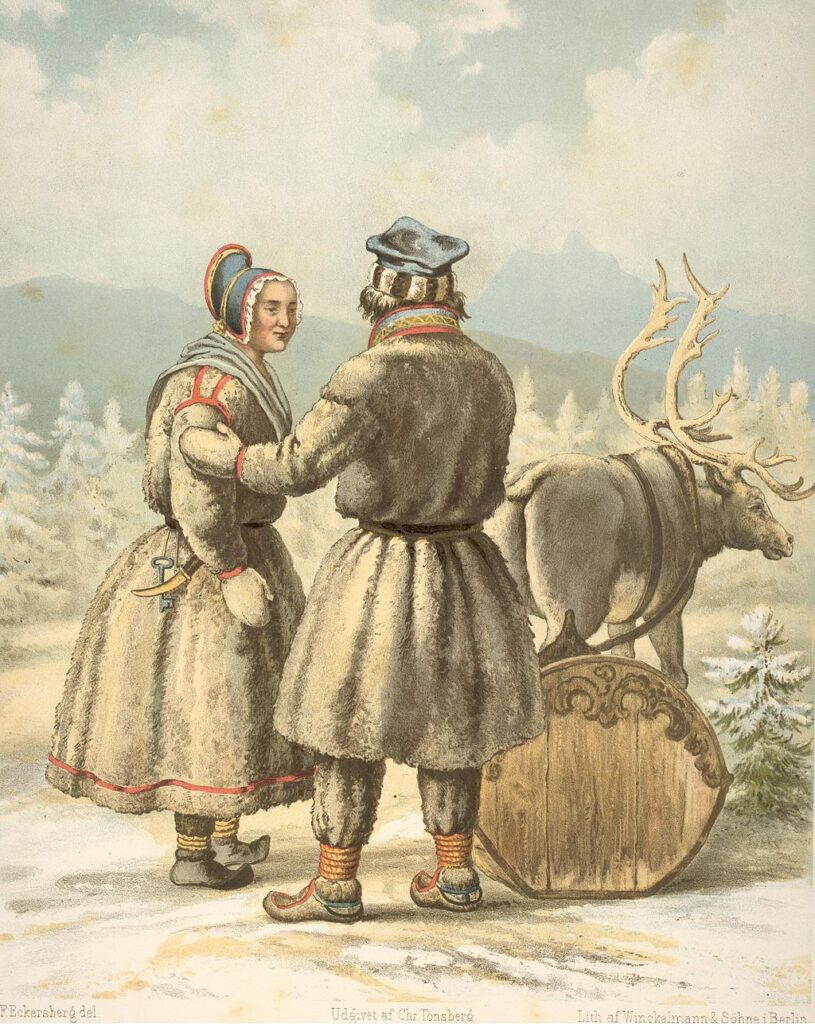
It doesn’t matter how warm you clothe the rest of your body. If your hands and head and feet are not properly attired, you will soon start to chill. Nowadays, buying a good pair of winter boots is a bit of an investment–and it is worth it. Having good insulation that will allow the extremities of your feet to stay warm and toasty is key to having a pleasant time outside on these beautiful Winter days.
Elements to good Winter boots
There are some simple and basic elements that are the most effective in insulating footwear:
Trapped Air
This is the most basic concept for insulation that we see in nature and human technology. The hairs of reindeer fur are actually hollow, making them have higher insulating qualities. Likewise, layering your garments helps trap the air and thereby making the best insulation. This concept is why a natural fiber like wool is so effective as an insulator. The crimped nature of the wool hairs creates a web of air pockets. And it’s true, getting a nice thick pair of wool socks is worth it!
Similarly, it’s better having larger boots that accommodate room for the insulating air pockets
Dryness
Maintaining dry feet is also essential. That means if your feet are too well insulated, they might start to sweat–and that could be bad. Likewise, failing to dry out your boot liners 100% at the end of the day could spell trouble for you the next day. Just a little bit of dampness in the tips of the toes can make you regret it for the rest of the day. I learned that the hard way when logging in the woods as a younger man. But, I never forgot it after that!
Traditional Footwear of the Far North
How did people keep their feet warm and dry in the past? Of course, that is a broad question. But the subject of this article concerns the Far North of Scandinavia, inhabited by the indigenous Sami and the settlers and homesteaders from Sweden, Norway and Finland. The iconic Sami boots with the upturned toes were called nutukas. They were also known as finnesko, or Finn shoe (The old Norse referred to the Sami as Finns). Though they may look a bit odd to us, the nutukas were a sophisticated bit of kit. So effective were they that they were worn by both Sami and non-Sami alike.

The key elements of the nutukas: First of all, the unmistakeable upturned toe. This conveniently accommodated the toe binding of a ski, which was usually a stiff, twisted sapling, or withe.
Sami boots were also made from reindeer hide from the leg skin of the animal with the hair facing out. The thinner reindeer hide was more supple than conventional thick boot leather. This made them more flexible and easier to take on and off in the deep cold of Winter.
How on earth were these boots of thin hide warm enough for snowy weather? The trick to insulating footwear lies in a very simple marsh plant.
A Very Useful “Weed”
A very common genus of plants found in marshlands is the sedge or Carex. It loves wet soil and is most distinguishable by its triangular cross-section. Nowadays, it can pop up in urban landscaping, sometimes escaping notice for a long time amongst other ornamental grasses until it is rather tall. Though considered little more than a weed of no use nowadays, the sedge has a long-forgotten cultural relationship with Man.
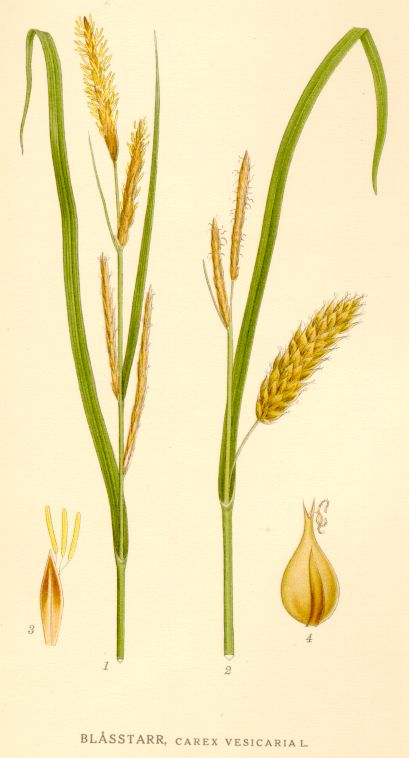
In the Arctic regions of Northern Scandinavia, the sedge played the important role of insulating footwear. Gathered in the late Summer and early Autumn, it was then dried and beaten with wooden mallets. This made it soft and supple for stuffing in boots.
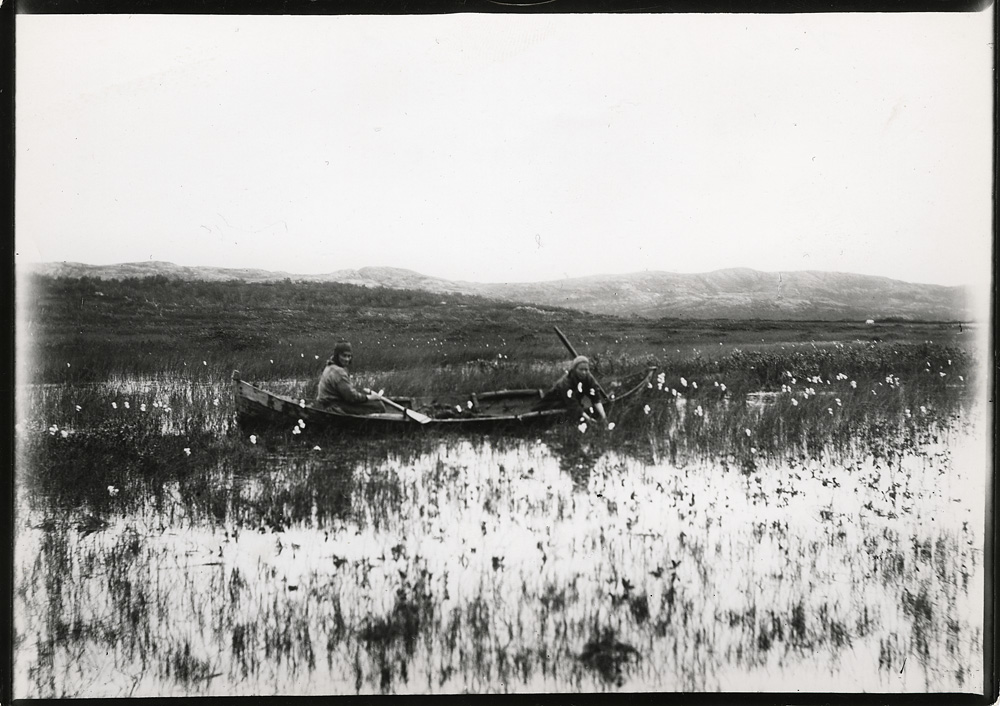
This sedge was known in Norway as sennegrass. In parts of Sweden the harvested and prepared sedge was simply known as skohö, or “shoe hay.” Though northern homesteaders may have paired this with thick woolen socks, the Sami would pack their shoes carefully enough without the need for socks!
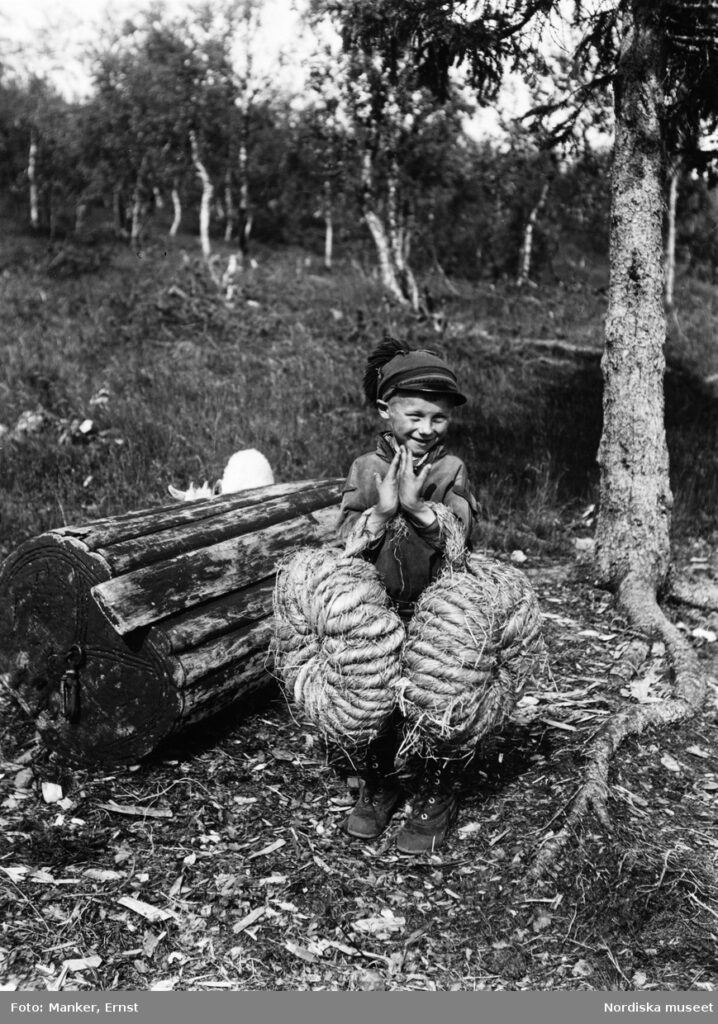
There was trick to making this simple material a superior insulation. You had to make virtually a nest of hay inside your boot. Doing so properly meant that your foot was completely padded and surrounded by the shoe hay. Especially important is having enough hay cushioning the tips of your toes. Likewise, don’t forget to have hay padding the top of your foot as well as the bottom!
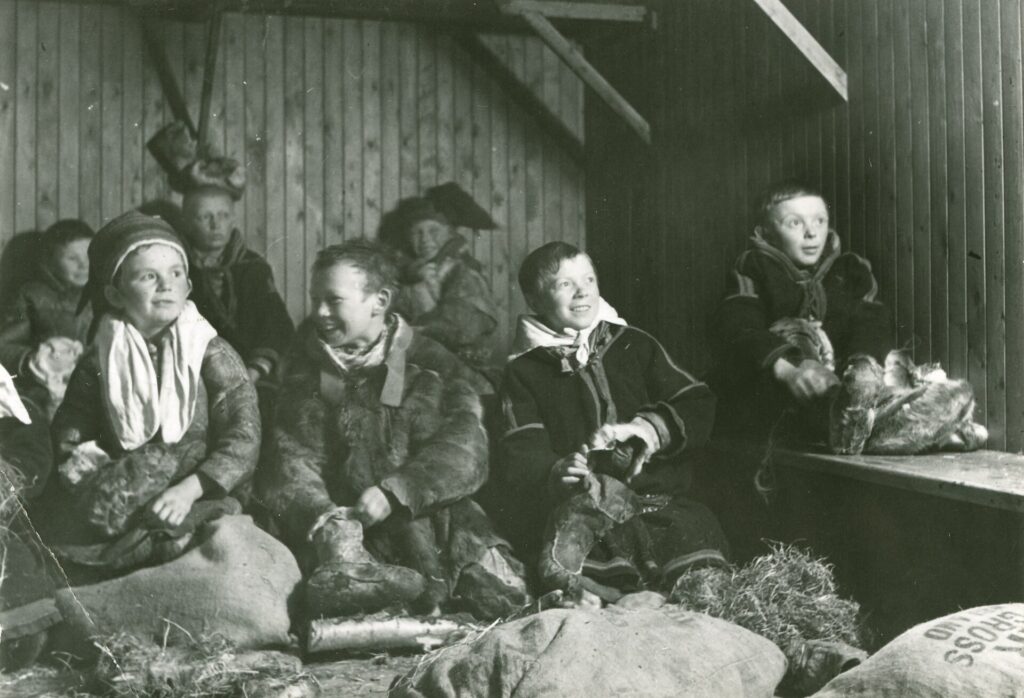
A Hay Chair?!
Though it seems that sennegrass was preferred, regular hay or straw was also used.
For the longest time, shoe hay was such a normal part of life in Northern Scandinavia that they even invented furniture for it–the “hay chair!”
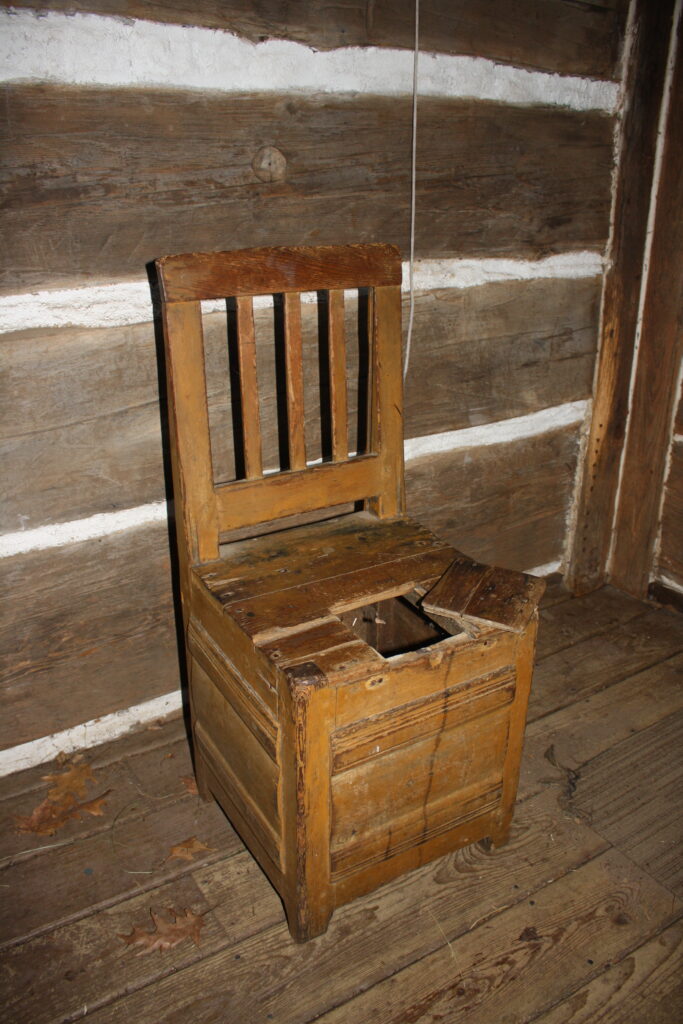
This is an old höstol or “hay chair” that my grandmother brought back from our relatives in Northern Sweden. It was simply a box that stored the dry hay. To stuff your shoes in the morning before going outside, you sat on the chair and accessed the hay via the little hatch on the seat.
Insulating Footwear in a “Survival Situation”
So, perhaps you are not as keen on stuffing hay in your boots as I am. I realize I am a bit eccentric.
But if you did find yourself in a survival situation in cold weather, this could actually be useful knowledge to literally “keep you on your feet.” Though you may not be able to find the sennegrass itself, there is a good chance of finding any sort of dead, dry tall grass. This could be gathered to stuff in your boots or shoes, if the occasion calls for it.
The reason why I am so enthusiastic about “shoe hay” is because I have tried it out for myself and it works! From my own experience, a couple handfuls of hay work effectively, if stuffed well to surround the entire foot. It is actually very pleasant and cozy feeling on the feet. In fact, it worked so well, I adopted shoe hay as part of my kit for going hunting. Read more about my soft-soled shoes here. One tip I have learned is to remove the hay and thoroughly dry it out after removing your shoes for the day. Then the next time you put your shoes back on, re-fluff and repack the hay for maximum insulating effect.
Shoe-hay is exciting because of its simplicity and its easy availability. And it is another little bit of cultural history that I have been able to revive and re-integrate into my life.
~ Nathanael
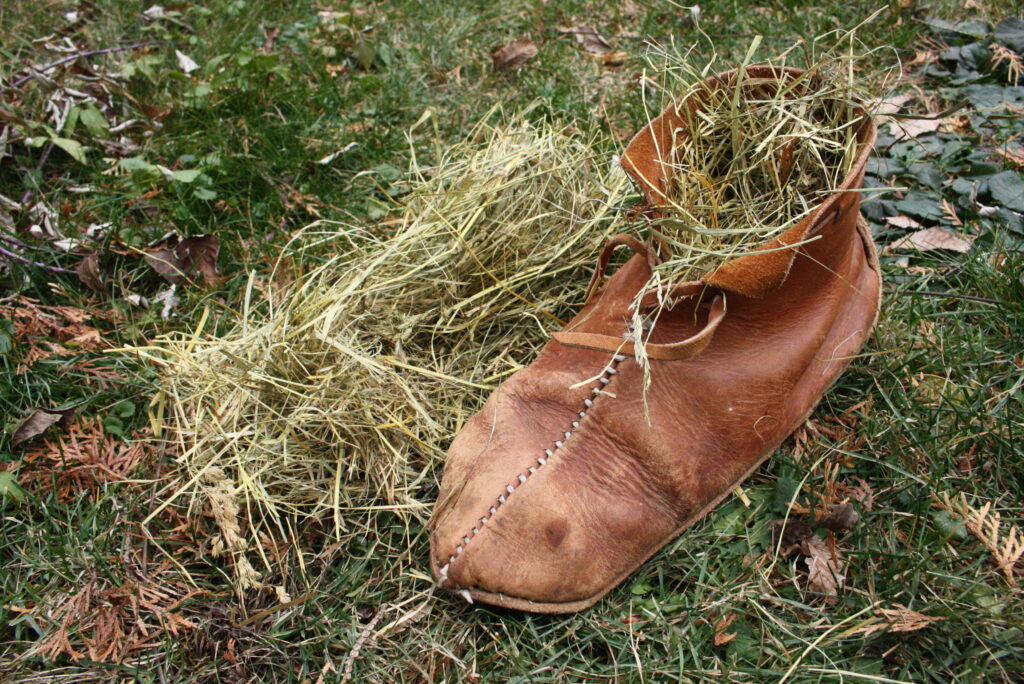
Interested in hearing more about Sami culture? Read this article?
The Ingenious Sewing Kit of the Sami People
Interested to read more on the origins of skiing?


Leave a Reply